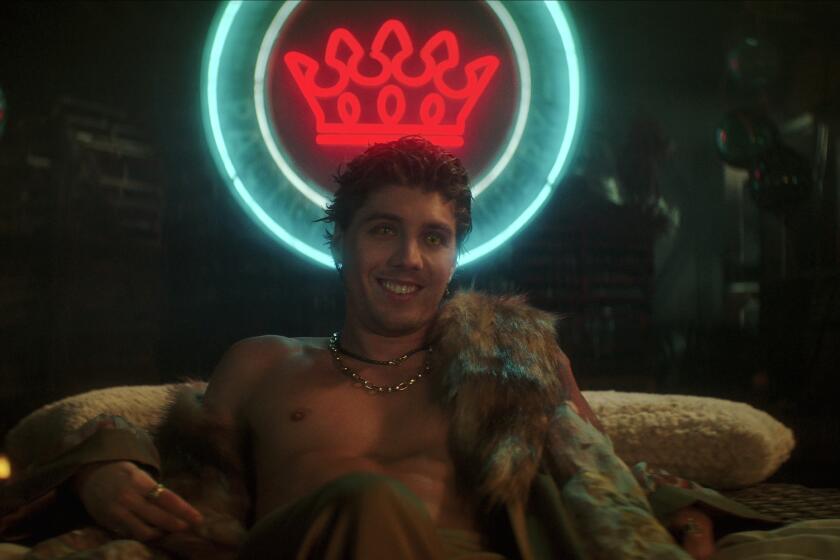Word of Mouth: ‘Shrek Forever After,’ ‘Toy Story 3,’ capture all-ages audience
Who says family films are just for families?
In one of the more surprising developments of the summer movie season, three movies primarily aimed at kids and their parents are drawing a surge of significantly older moviegoers — many of whom are going without their children — in a trend that single-handedly has reversed the vacation season’s box-office doldrums.
Thanks to the performance to date of the PG-rated “Shrek Forever After” ($223.8 million in domestic release), the G-rated “Toy Story 3” ($125.9 million) and the PG-rated “The Karate Kid” ($110.6 million), total receipts since the first weekend of May are now even with where they were a year ago, a material improvement from early June, when ticket sales were off 4% (summer admissions are still down about 6% compared with 2009).
Because these three films are either sequels or remakes with significant nostalgic appeal (and attracted some very favorable reviews), they are reaching an audience that typically would drop off their children at the multiplex, rather than join them inside the auditorium.
According to data collected by the audience survey firm CinemaScore, 46% of Pixar and Disney’s “Toy Story 3’s” audience was 25 and older, while 40% of DreamWorks Animation and Paramount’s “Shrek Forever After’s” audience fell into the same category. Sony says 44% of its “Karate Kid” audience was older than 25, and early audience tracking surveys show that the moviegoers most interested in July 2’s PG-rated “The Last Airbender” from Paramount are older men, while older women are the keenest to see July 9’s PG-rated animated comedy “Despicable Me” from Universal.
For years, Hollywood has relied on movies playing younger than might be apparently obvious, particularly among PG-13 rated releases. Recent blockbusters such as the “Spider-Man,” “Transformers” and “Pirates of the Caribbean” series appealed primarily to older teens and young adults, but a large number of boys ages 8-14 (some accompanied by their parents, many not) also attended these occasionally violent and sexually suggestive productions.
This summer, the opposite is true.
Younger moviegoers have mainly steered clear of PG-13 movies like “The A-Team,” “Prince of Persia: The Sands of Time” and “Robin Hood,” while older teens flocked to much tamer fare. Disney says 40% of “Toy Story 3’s” non-family audience was ages 17-24 — people who ordinarily wouldn’t make animated movies their first choice.
“We aggressively marketed to that audience,” says Disney studio chief Rich Ross, adding that many teens who grew up with the “Toy Story” movies (the first premiered in 1995, while the first sequel came out in 1999) see themselves in the film’s human protagonist, Andy, who is headed to college in the third film.
In the months leading up to the film’s June 18 premiere, Disney took a truncated, 65-minute “cliffhanger” version of “Toy Story 3” to 40 college campuses, drumming up interest among older teens. The campaign clearly worked: In the film’s opening midnight screenings, “Toy Story 3” grossed nearly $4 million — an extraordinary result for a movie about talking playthings, and clearly not driven by 7-year-olds and their moms.
“It is playing to all ages,” Ross says. “Pixar movies always play broadly.” While he declined to handicap the film’s ultimate prospects, rival studios say the film should certainly become Pixar’s highest-grossing movie ever, surpassing “Finding Nemo’s” $339.7 million.
Sony always believed its “Karate Kid” update played well — it is among the studio’s best-testing movies ever. What astonished Sony was that people of all ages came to see the story of a bullied 12-year-old ( Jaden Smith) and his martial arts instructor ( Jackie Chan). “That was the key to its success — it wasn’t just parents taking their kids to a PG film,” says Jeff Blake, the vice chairman of Sony Pictures Entertainment. “It was a movie for everybody.” About 40% of the film’s ticket buyers were adults without kids, Blake says.
“It’s edgy enough to really be a compelling story,” Blake says, “but at the same time, it does have a lot of family issues and speaks to families being together.”
If the movies-playing-older trend continues through the rest of the summer, Paramount and Universal won’t be complaining. “It’s just great to see that when there are movies truly for the whole family, the uplift can be dramatic,” says Adam Fogelson, the chairman of Universal Pictures.
In a week, Paramount is releasing M. Night Shyamalan’s “The Last Airbender,” a live- action movie adapted from a cartoon on cable television’s Nickelodeon. The film is set to debut opposite “The Twilight Saga: Eclipse,” and even though “Airbender” will surely lose the weekend, it is showing much broader audience interest.
Older males “are the audience that is most interested in Shyamalan as a filmmaker,” Paramount Vice Chairman Rob Moore says of the director of “The Sixth Sense” and “Signs.” “Dads are definitely going to be taking their kids regardless of their age.” And teenage moviegoers who like more typical summer fare won’t be disappointed, Moore says. “It has great effects and action adventure.”
Fogelson is equally optimistic about “Despicable Me,” the studio’s first release from its new animation division. Because it was made for far less than half the cost of “Toy Story 3” and “Shrek Forever After,” the story about a master thief (voiced by Steve Carell) and three orphan girls doesn’t have to gross a fortune to break even.
“There are a lot of really positive signs here,” Fogelson says. “I think it’s a story that doesn’t feel like it’s attempting to pander to a pure family audience.”
More to Read
The biggest entertainment stories
Get our big stories about Hollywood, film, television, music, arts, culture and more right in your inbox as soon as they publish.
You may occasionally receive promotional content from the Los Angeles Times.







